Landscaping in Gardening: A Gardener's Comprehensive Guide
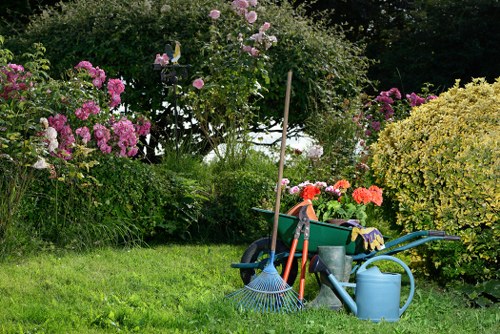
Introduction to Landscaping
Landscaping is an art and science that transforms outdoor spaces into beautiful and functional areas. For gardeners, understanding the principles of landscaping is essential to creating a harmonious and sustainable garden. Whether you're a seasoned gardener or a novice, mastering landscaping techniques can elevate your gardening experience.
The essence of landscaping lies in the thoughtful arrangement of plants, structures, and decorative elements to enhance the aesthetic appeal of your garden. It involves planning, designing, and maintaining various aspects to create a cohesive environment.
In this guide, we will explore the fundamental aspects of landscaping for gardeners, covering everything from design principles to practical maintenance tips.
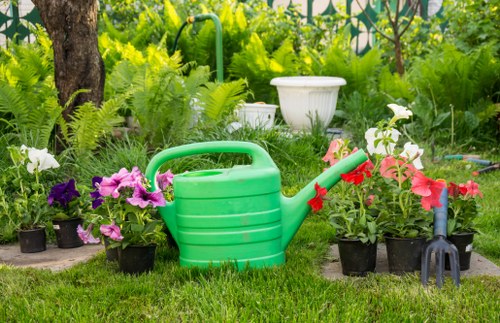
Planning Your Landscape
Assessing Your Space
Before diving into landscaping, it's crucial to assess the space you have. Consider factors such as the size of your garden, sunlight exposure, soil quality, and existing structures. This assessment will help you determine what plants and features will thrive in your environment.
Key considerations include:
- Sunlight: Understanding the amount of sunlight your garden receives will guide your plant selection.
- Soil Type: Different plants require specific soil conditions. Conduct a soil test to determine its pH and nutrient levels.
- Space Layout: Plan the layout to ensure that each element has enough space to grow and function effectively.
Proper planning sets the foundation for a successful landscaping project, ensuring that your garden meets both aesthetic and functional goals.
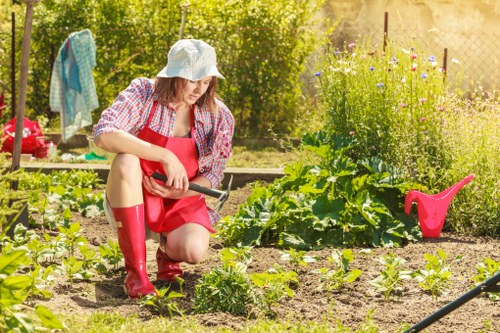
Design Principles
Balance and Symmetry
Balance in landscaping refers to the distribution of visual weight within the garden. Symmetrical designs create a formal and orderly look, while asymmetrical designs offer a more natural and relaxed feel.
Color Coordination
Color plays a vital role in garden design. Selecting a color palette that complements your plants and structures can enhance the overall aesthetic. Consider using contrasting colors to make certain elements stand out or analogous colors for a harmonious effect.
Texture and Variety
Incorporating different textures adds depth and interest to your landscape. Mix various plant textures, such as smooth leaves with rough bark, to create a visually appealing environment.
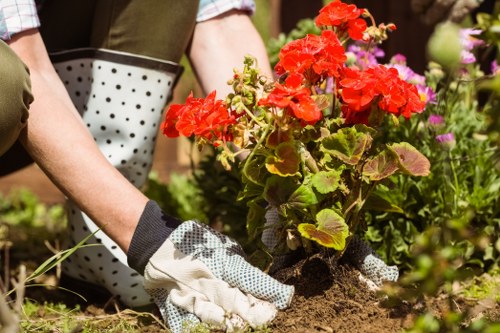
Plant Selection
Choosing the Right Plants
Selecting appropriate plants is crucial for successful landscaping. Consider factors like climate, soil conditions, and the plant's growth habits. Native plants are often a great choice as they are well-adapted to the local environment and require less maintenance.
Plant Maintenance
Regular maintenance ensures that your plants remain healthy and vibrant. This includes watering, pruning, fertilizing, and monitoring for pests and diseases. Proper maintenance prolongs the life of your plants and enhances the beauty of your garden.
Seasonal Considerations
Plan your garden to provide interest throughout the year. Incorporate a mix of evergreen and deciduous plants, as well as those that bloom in different seasons, to ensure your landscape remains attractive year-round.
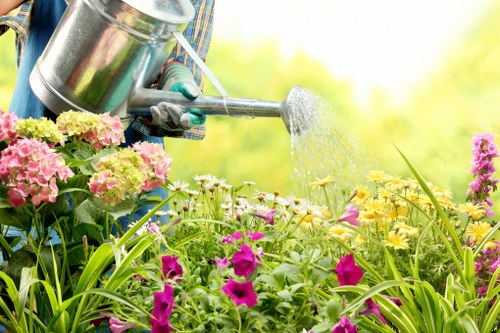
Hardscaping Elements
Pathways and Walkways
Pathways guide visitors through your garden and can be made from various materials like stone, gravel, or wood. They not only add functionality but also contribute to the visual appeal of your landscape.
Water Features
Incorporating water features such as ponds, fountains, or waterfalls can add a soothing ambiance to your garden. They attract wildlife and enhance the sensory experience of your outdoor space.
Outdoor Structures
Elements like pergolas, arbors, and garden benches provide structure and focal points. They offer areas for relaxation and can be used to support climbing plants, adding vertical interest to your garden.

Maintenance and Sustainability
Regular Upkeep
Maintaining your landscaped garden involves consistent care. Regular tasks include weeding, pruning, mulching, and watering. Staying on top of these tasks prevents problems from escalating and keeps your garden looking pristine.
Sustainable Practices
Adopting sustainable gardening practices benefits both your garden and the environment. Techniques such as composting, rainwater harvesting, and using organic fertilizers reduce waste and promote healthy plant growth.
Composting
Composting recycles organic waste into nutrient-rich soil amendments, enhancing soil fertility and structure.
Rainwater Harvesting
Collecting rainwater for irrigation conserves water and reduces dependency on municipal sources.

Advanced Landscaping Techniques
Terracing and Leveling
Terracing creates flat areas on sloped terrains, allowing for more planting space and preventing soil erosion. It adds depth and dimension to your landscape design.
Irrigation Systems
Installing efficient irrigation systems ensures that your plants receive adequate water. Drip irrigation and soaker hoses are popular choices for their water-saving benefits.
Lighting Solutions
Outdoor lighting highlights key features of your landscape and extends the usability of your garden into the evening. Options include solar-powered lights, LED fixtures, and traditional lanterns.

Choosing Professional Help
When to Hire a Landscaper
While DIY landscaping can be rewarding, there are times when hiring a professional landscaper is beneficial. Professionals bring expertise in design, plant selection, and project management, ensuring that your landscape achieves its full potential.
Selecting the Right Professional
When choosing a landscaper, consider their experience, portfolio, and client reviews. Ensure they understand your vision and can work within your budget and timeline.

Landscaping Trends
Eco-Friendly Gardens
Eco-friendly landscaping emphasizes sustainability by using native plants, reducing water usage, and incorporating recycled materials. These gardens are not only environmentally responsible but also resilient and low-maintenance.
Minimalist Designs
Minimalist landscaping focuses on simplicity and clean lines. It uses a limited color palette and fewer plant varieties to create a serene and uncluttered space.
Vertical Gardens
Vertical gardens maximize space by growing plants vertically on walls or structures. They are ideal for small spaces and add a unique visual element to your landscape.

Conclusion
Landscaping is a vital aspect of gardening that enhances the beauty, functionality, and sustainability of your outdoor space. By understanding and applying the principles of effective landscaping, gardeners can create stunning environments that thrive year-round.
Whether you're planning a new garden or looking to improve an existing one, investing time and effort into thoughtful landscaping will yield rewarding results. Embrace the art of landscaping and watch your garden flourish.
Ready to transform your garden? Contact us today to start your landscaping journey.



